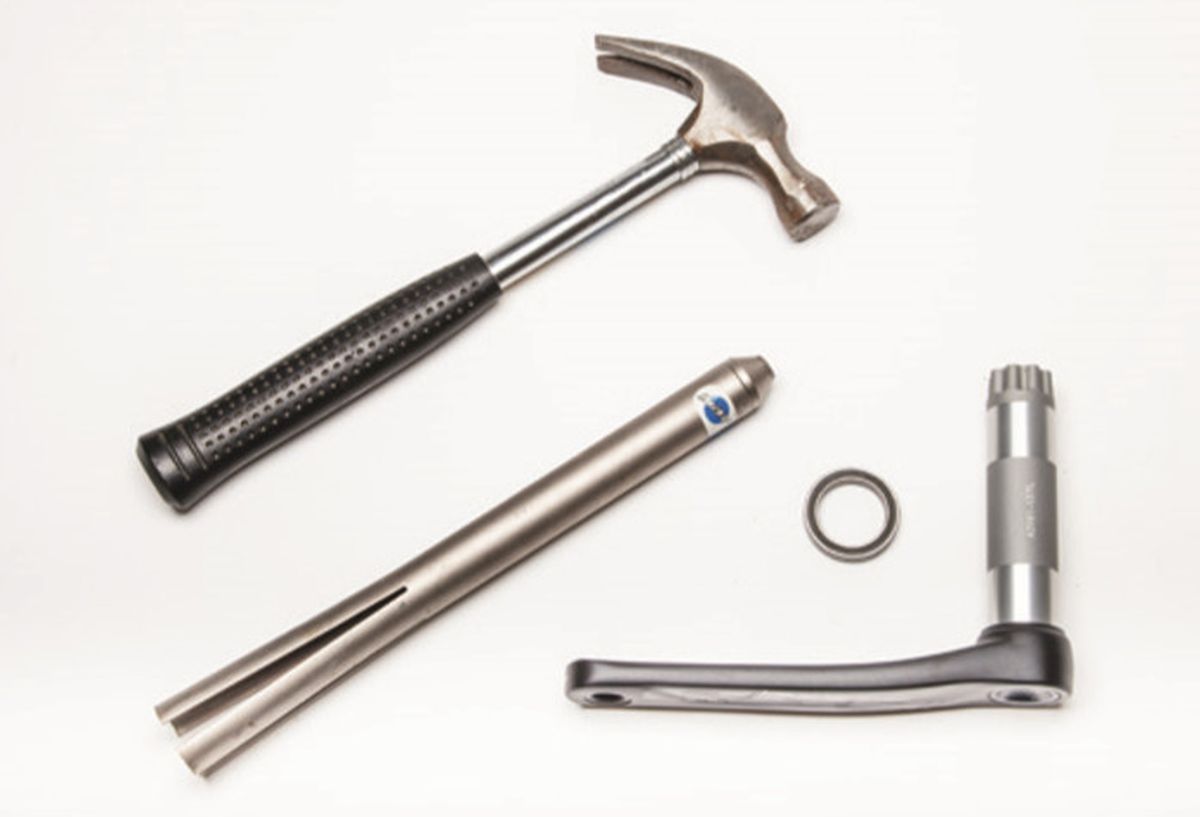How to hit your bike
Sometimes a repair needs some force

by Nick Di Cristofaro
You’d probably cringe if you saw someone take out a hammer and approach your bike. There are times, however, where a little force is necessary to do some mechanical work on your lightweight, somewhat-fragile, carbon-fibre steed. But, before you start swinging yourself, let’s go through some tips.
If your bike is clamped into a traditional work stand by the seatpost, you must pay careful attention to when and how you apply force to the frame. You should also take care when you’re removing bolts and threaded bottom-bracket cups, too. Whenever you apply force, you must brace the frame. Make sure the seatpost doesn’t face too much strain. For example, when you are tapping a crankset into a bottom bracket, hold the frame with your opposite hand to brace the bike. I have actually seen someone crack a frame that he didn’t support properly. That said, he was hitting the crank pretty hard. Another tip: if you have to hit the bike with a blow stronger than a “love tap” (a very light smack, that is), take the frame off the stand before doing so.
Removing press-in bottom-bracket cups
Sometimes these cups come out easily with the aforementioned love tap and sometimes they don’t. Remove the wheels from your bike and the bike from your stand. Lay the frame on the front of your thighs with top tube by your chest and kneel down slightly. You have now braced your frame in a sort of bike bear hug. Proceed to remove that BB cup with the appropriate removal tool and your hammer with a metal face.
Removing a fork stuck in the head tube
A seized headset will sometimes be so corroded that you can’t remove the fork by hand. You’ll need to give it a smack to get it moving. If the bike is clamped by its seatpost, brace the frame by holding the down tube and use a soft-face hammer to give a few gentle whacks. Keep things gentle, especially if you have a carbon fork. Once the fork starts moving, you will feel more movement with each additional hit. If you don’t feel movement, don’t hit harder. Instead, take the bike to a professional mechanic.
Installing a crankset
When installing a new crankset, always try to push it into the bottom bracket by hand. Only take out the hammer if hand power does not suffice. Make sure the crank’s shaft is lined up with where it needs to go. Place a rag over the spider of the crank to protect the finish. Brace the frame. Use a soft-face hammer and apply a few love taps. Make sure the hammer face lands squarely to get a straight hit. Always aim for the centre of the spider and not the edges. You can bend them and the chainrings, causing permanent damage.
Removing a wheel’s cartridge bearings
When you remove cartridge bearings from a wheel, always start with a good bracing method. The best has the hub on a hard, flat surface for the initial hit with your approved removal tool and trusty metal-face hammer. Don’t, for example, place your wheel on the opening of a garbage can. That setup will only brace the spokes and could cause damage. After the initial hit, move on to the bear-hugbrace method outlined above.
Happy (careful) hammering.
